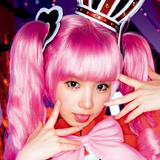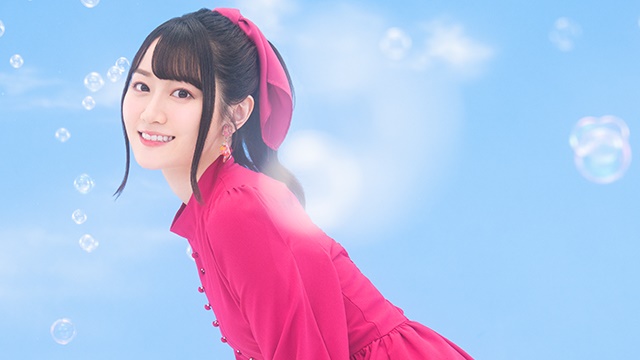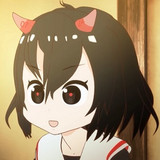#The Boy and the Heron

Hayao Miyazaki’s first movie since 2013’s The Wind Rises possesses two distinct halves. The first half of The Boy and the Heron is draped in a light but ever-present miasma of unease and mystery, as the film’s young protagonist struggles not just with his father’s remarriage, but also with unsolicited visits from a sinister, speech-capable grey heron. In contrast, the second half feels more like a “standard” Miyazaki fantasy adventure, one that’s still mesmerizing and impressive, yet a little less fascinating than the build-up leading to it.
That second half is also unfulfilling in its development of the main character, and the narrative developments it introduces towards the end can feel almost overwhelming. The latter isn’t as big of a deal, for the most part — this section of the movie feels like a fantastical dream that encourages you to be swept away by the flow rather than attempt to grasp every little thing. However, I do wish the lead character’s change felt less abrupt, especially given the personal reasons behind his journey.
The first half of The Boy and the Heron is draped in a light but ever-present miasma of unease and mystery.
Heron’s protagonist is Mahito (Souma Santoki), a boy who loses his mother to a hospital fire during World War II. Following his mother’s death, he relocates from Tokyo to the estate of his new stepmother, Natsuko (Yoshino Kimura). Mahito struggles to settle into his new life, and he also has to face a mysterious tower and the heron (Masaki Suda), who claims that his mother is still alive.
I was filled with an intriguing sense of discomfort during the first half of The Boy and the Heron — not just because of the slightly awkward angle of my seat, but also because it was never clear what final form or direction the film would eventually settle on. I relished that uncertainty — of not knowing why the heron is so persistent in enticing Mahito, why Natsuko bears a resemblance to Mahito’s mother, what secrets the tower holds, and why Mahito’s presence seems to be the catalyst for something. It’s a slow burn that had me continuously wondering what everything was building up to, with the sinister aura of the heron and the tower adding a tinge of eeriness while Joe Hisaishi’s masterful score kept me ever on guard.
Mahito himself exists in a state of discomfort during this time, maintaining civility but also distance from Natsuko. There’s an understated but arresting sequence where he secretly observes a late-night interaction between his father and Natsuko, his inner mind feeling both clear and obfuscated. The scene ends with an unbroken cut of Mahito carefully returning to his room, in reverse and on all fours, his stern, unchanging expression making you wonder about the tangle of thoughts that must be enveloping his mind.
That cut of Mahito’s stealthily retreating form alone feels like a mini-masterpiece, thanks to the character animation that glued my eyes to his every movement. The entirety of Heron’s animation is just fantastic. There’s a sense of rawness to some of the drawings in the first half, especially during a surreal scene of Mahito racing through embers and throngs of people towards the hospital, where the animation embraces an almost chaotic fluidity over rigidly regulated forms. The moment when Natsuko comes to pick up Mahito at the station is delectable in its depiction of weight, not just in terms of the physicality of the character movements, but also the swaying of the rickshaw in response to their disembarkation and embarkation.
Anything that moves in the film is truly spellbinding to watch — humans of various shapes and sizes; fiercely billowing sails; the flames commanded by the fearless Himi (Aimyon), a character who I wish had more screen time; and the overwhelming water of the ocean. And then there are the birds: the heron, the pelicans who feast on the innocent warawara spirits, and the surprisingly unsettling army of parakeets. The depiction of the heron’s transformation into a grumpy man with an uncomfortably and comically oversized nose is just fascinating, and the shots involving flocks of pelicans or parakeets surging forth in unbridled motion really leave a sense of wonderment at the scale and ability involved.

“Wonderment” was a word that often came to mind during the film’s second half, which has Mahito embarking on a quest with the heron as an unlikely companion. Long-time Ghibli producer Toshio Suzuki has said that the “push and pull” relationship between the two is one of the elements inspired by Miyazaki’s life, with Miyazaki being Mahito and the heron being Suzuki. I mentioned at the start of the review that this half felt like a “standard” Miyazaki fantasy adventure, and while I do mean that as a slight indictment, it’s also praise. I never stopped missing the darker and more uncomfortable tone of the initial half, but the remainder of Heron still managed to impress with its imagination. And the sense of familiarity, when it arose, was often very comforting — a reminder that I was watching a Miyazaki film.
But despite the impressive canvas painted by Miyazaki, I found Heron’s second half lacking in its depiction of Mahito’s development. Mahito isn’t just embarking on a physical trek, but a journey of acceptance — of his mother’s fate, and of his stepmother — yet the latter feels like it’s missing the “journey” part of the equation, instead arriving abruptly and unsatisfactorily at its destination. There’s a key moment that should’ve been very powerful, but my brow kept furrowing instead because of how hollow Mahito’s words felt in spite of Santoki’s excellent delivery. Heron’s protagonist is too stoic to spell out his thoughts and emotions for easy reference, and that’s perfectly fine, but I wish the key stages or spark for his evolution were depicted more tangibly in some fashion to make the emotional climax feel earned.
Nonetheless, I could never think of discouraging someone from watching this movie.
The other thing that bothered me, although less severely, was how the film’s final stretch feels slightly overpacked relative to its length. In a rather short span of time, a character with motivations that pit him against Mahito is introduced, a new objective comes into play, the lord of the tower makes various revelations, and then the movie begins packing up. It’s not impossible to keep track of these happenings and reveals, but there isn’t adequate time to properly digest and appreciate the interesting ideas involved before the film hurries along. The final act still manages to be enjoyable, but it feels like a truncated version of something originally larger and more patient. The compact structure also means that characters like the aforementioned antagonist and Himi, the latter of whom also joins the proceedings at a fairly late stage, don’t manage to be as memorable as they could and deserve to be (Himi’s celestial musical motif will never leave my mind, though).

To be honest, I was mildly disappointed as I sat through Heron’s credits. I still am. I wouldn’t have minded a strong second half whose only crime was being slightly less impressive than the excellent first half, but the issues that appear at the end, although few, have an incredibly debilitating effect on what should have been a high point.
Nonetheless, I could never think of discouraging someone from watching this movie. It’s not possible for me to say I like Heron without adding a “but,” but I still see it as an impressive, remarkable creation overall. Even though it left me feeling somewhat dissatisfied, I’m truly glad I got to experience something like it.
Staff
• Director, scriptwriter, creator: Hayao Miyazaki
• Animation director: Takeshi Honda (Evangelion: 3.0+1.01 Thrice Upon a Time co-original character designer, Millenium Actress character designer)
• Music composer: Joe Hisaishi (Spirited Away, My Neighbor Totoro)
Cast (Japanese)
• Souma Santoki as Mahito
• Yoshino Kimura as Natsuko
• Takuya Kimura as Shoichi Maki
• Jun Kunimura as The Parakeet King
• Kaoru Kobayashi as the Noble Pelican
• Kou Shibasaki as Kiriko
• Aimyon as Lady Himi
• Masaki Suda as Gray Heron
• Shouhei Hino as Granduncle
Cast (English)
• Luca Padovan as Mahito Maki
• Christian Bale as Shoichi Maki
• Dave Bautista as The Parakeet King
• Gemma Chan as Natsuko
• Willem Dafoe as Noble Pelican
• Karen Fukuhara as Lady Himi
• Mark Hamill as Granduncle
• Robert Pattinson as Gray Heron
• Florence Pugh as Kiriko
• Mamoudou Athie, Tony Revolori, and Dan Stevens as the Parakeets
If you liked the article, do not forget to share it with your friends. Follow us on Google News too, click on the star and choose us from your favorites.
For forums sites go to Forum.BuradaBiliyorum.Com
If you want to read more anime-manga articles, you can visit our anime-manga category.




